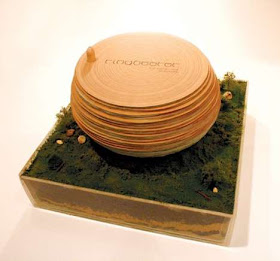 |
| Thalia, named "Princess" the night before, waits for a parade to start. |
The United States is known as the "Land of the Free", but many who live here would debate that. In many states gays and lesbians are not allowed to marry or share the privileges of straight people. Transvestites are often objects of ridicule or humor. So much for freedom of expression.
 |
| Carmelo, 13, in his first appearance as a girl at an annual muxe celebration. |
Yet Mexico, which brings immediate thoughts of machismo, has a very enlightened region that not only allows freedom of expression, but respects and values it. In Juchitán, Oaxaca, gays and transvestites live with complete tolerance.
 |
| Alejandro, 16, is one of six children but the only muxe. |
 |
| Beth-Sua gets ready to attend a transvestite beauty pageant. |
 |
| Beth-Sua enjoys a smoke at the pageant. She represents her city's muxes, and is a local organizer and HIV-AIDS activist. She also embroiders huilpiles. |
At least one third of all males in Juchitán are gay. Unlike the rest of Mexico, where putos ("faggots") are targets for ridicule and abuse, in Juchitán gender is simply a matter of natural impulse. Muxes express their identities in different ways. Some dress as women; some take hormones and/or surgically alter their bodies; some favor traditional male demeanor. Many just take pride in their difference preferring to be neither male or female, but just themselves.
Muxes are active and successful business people. The area is famous for huipiles, hand-embroidered blouses, which many muxes are involved in making. They own hair salons and specialize in dressing women. Festivals and parties provide business opportunities as well. Some muxes have quinceañeras, the traditional Latin American coming-of-age celebrations of a young woman's 15th birthday (another Aztec tradition). The muxes have their own celebration called "The Party of the Authentic Intrepid Ones Who Search for Danger", "The Intrepid Ones" being what gays in Juchitán call themselves. Every November there is a festival that attracts people from all over the world.
 |
| Mistica, 30 is popular and well-known. She is considered an astute businesswoman who has a cosmetics business. |
***************
Photos courtesy of Katie Orlinsky for the NY Times
*******************************











































